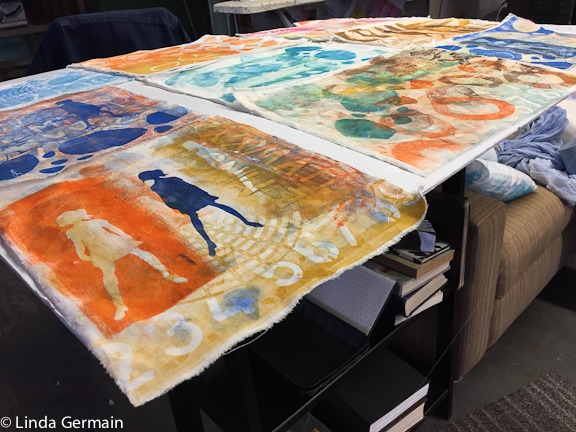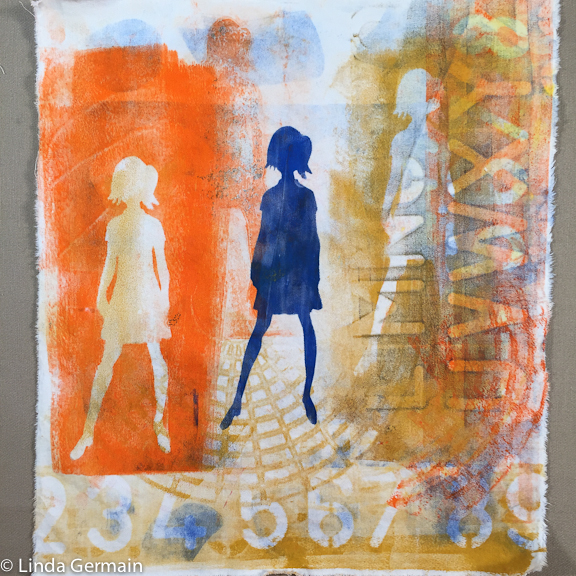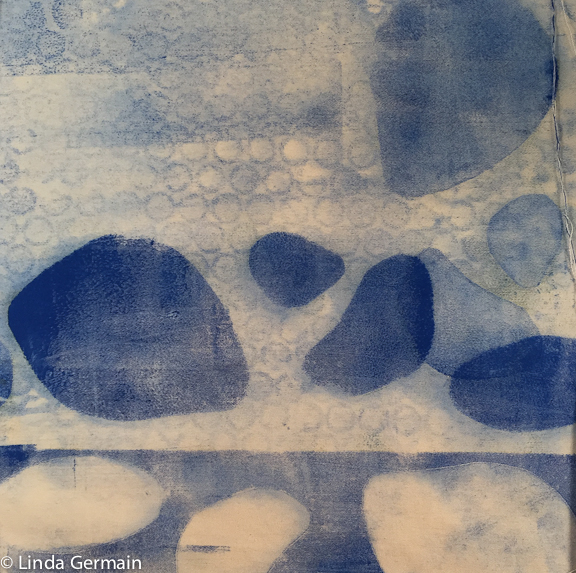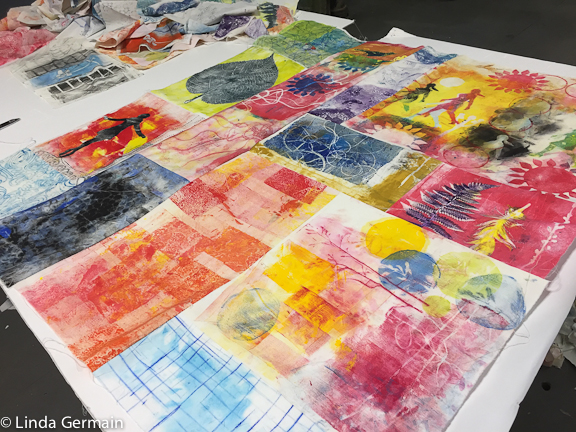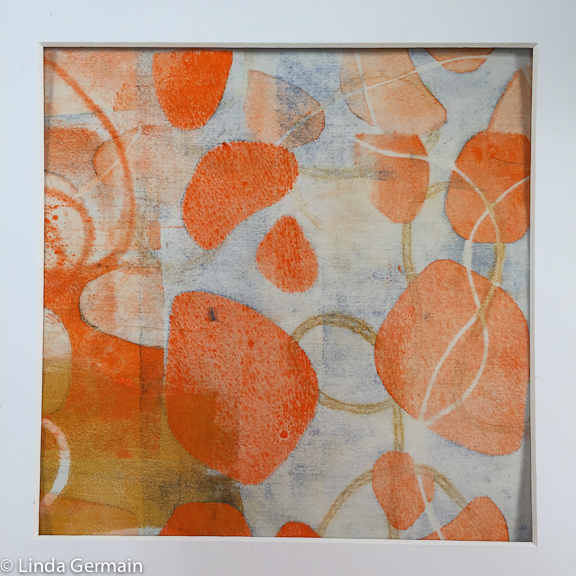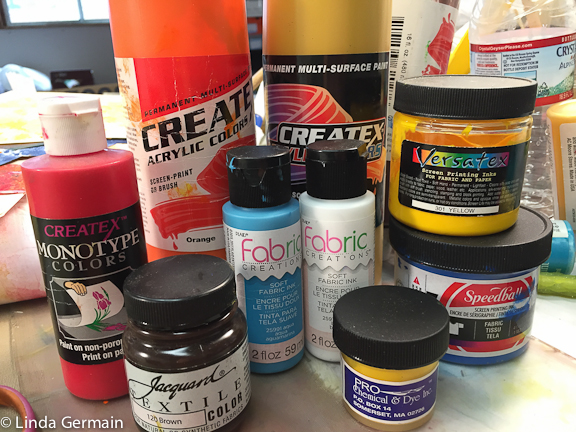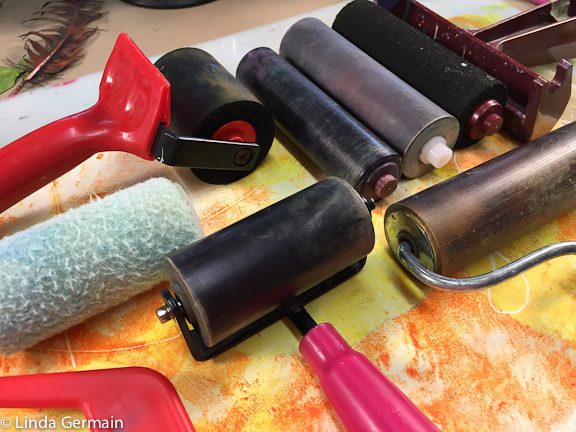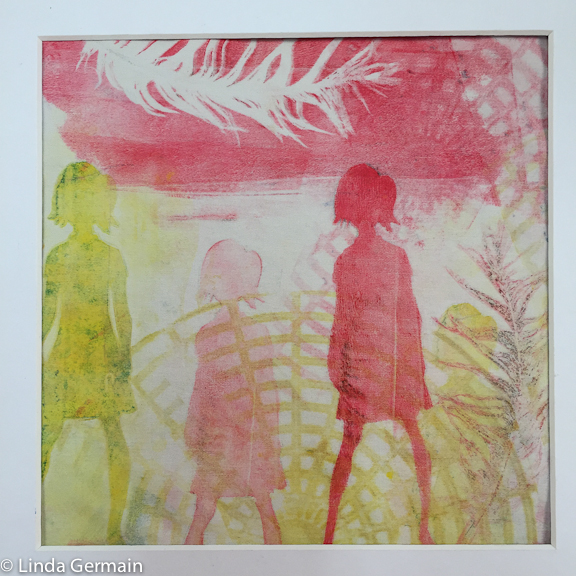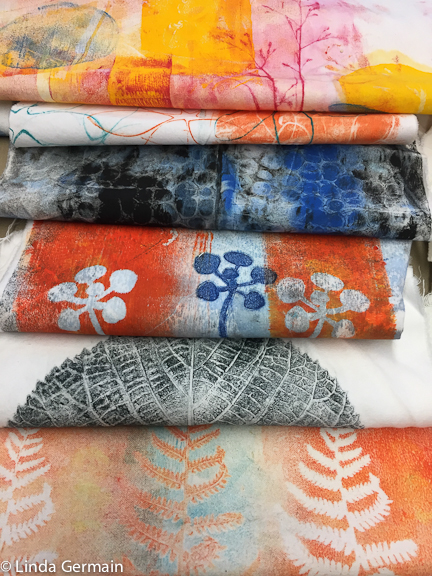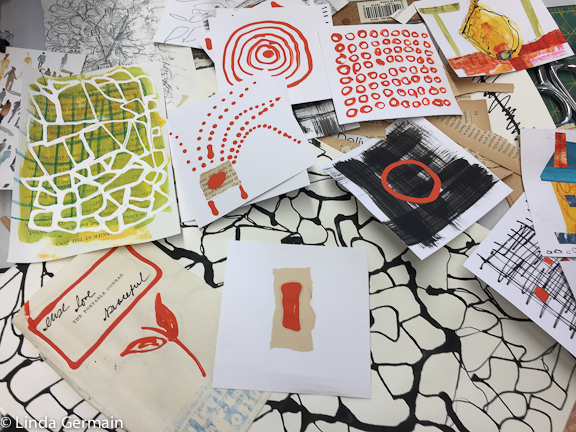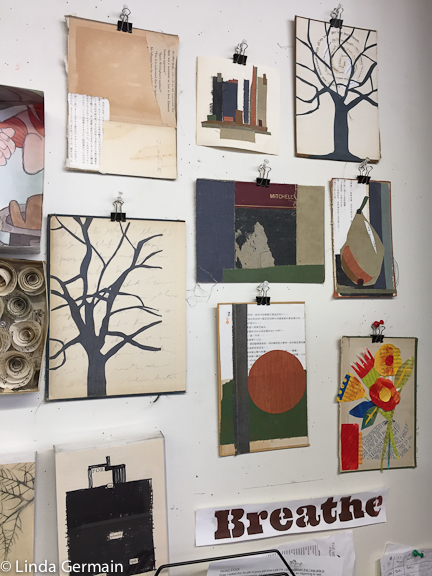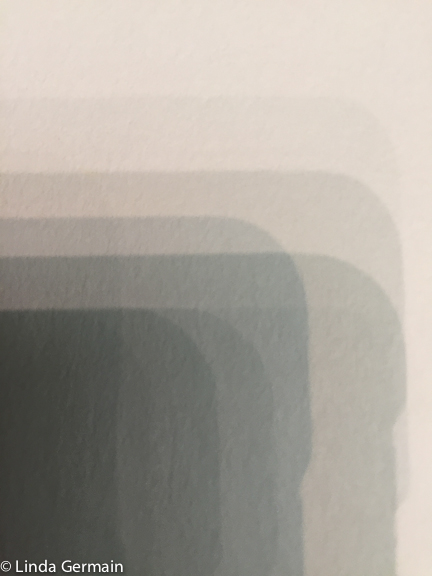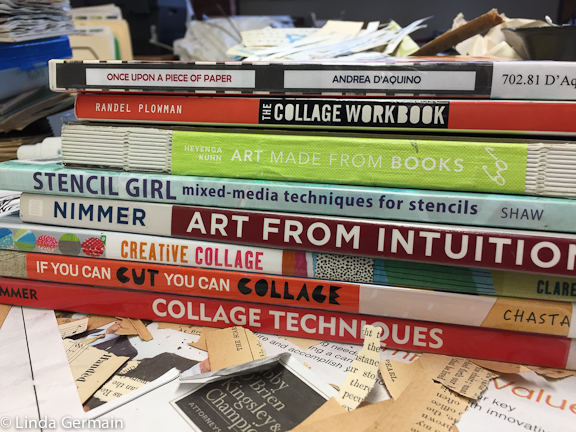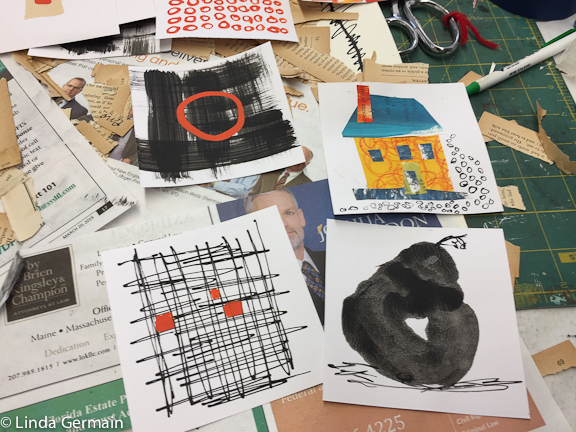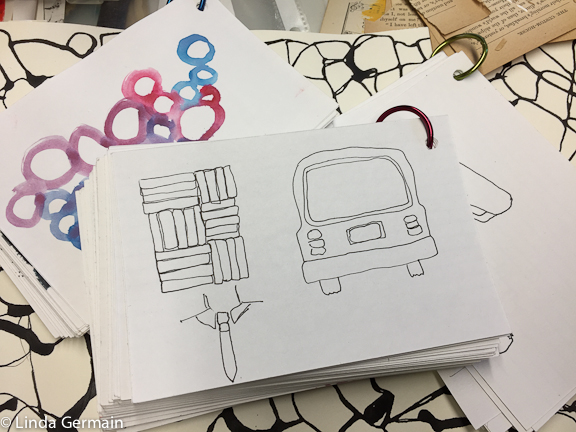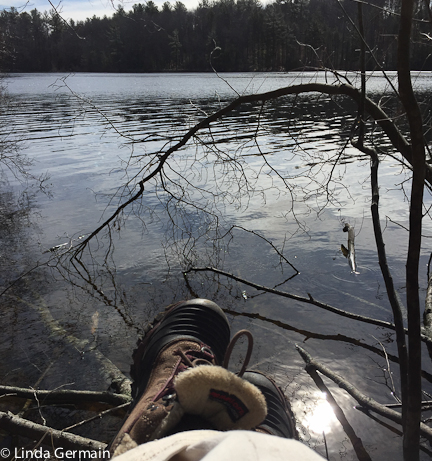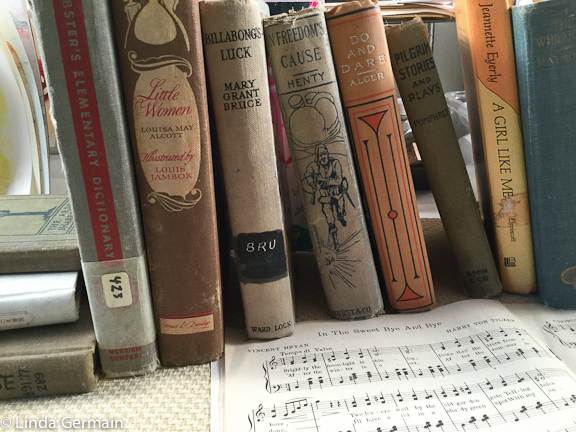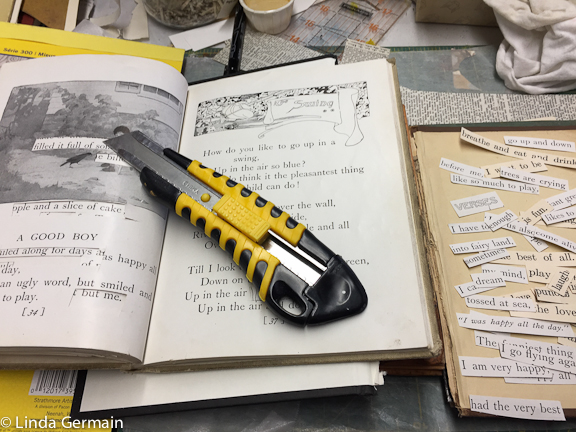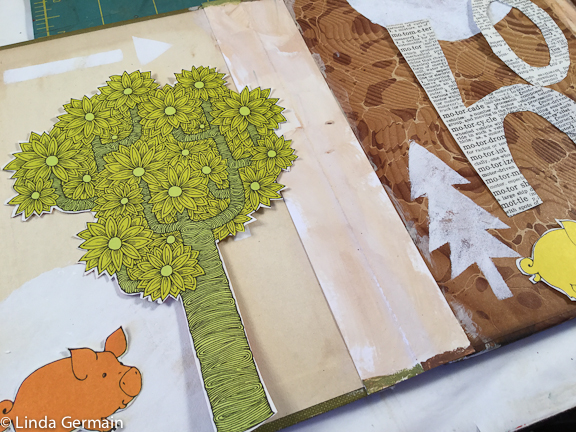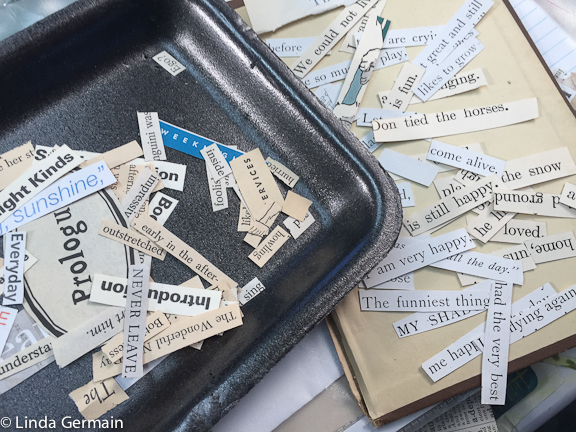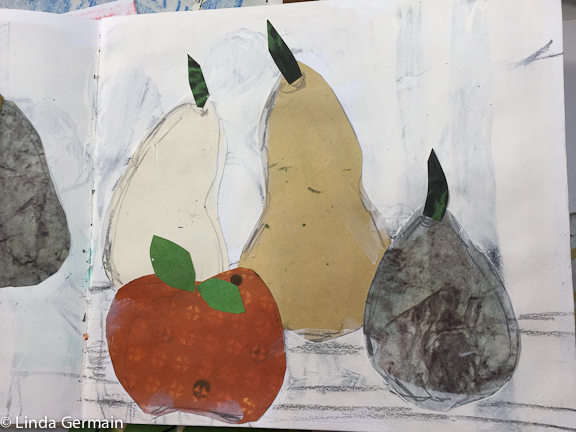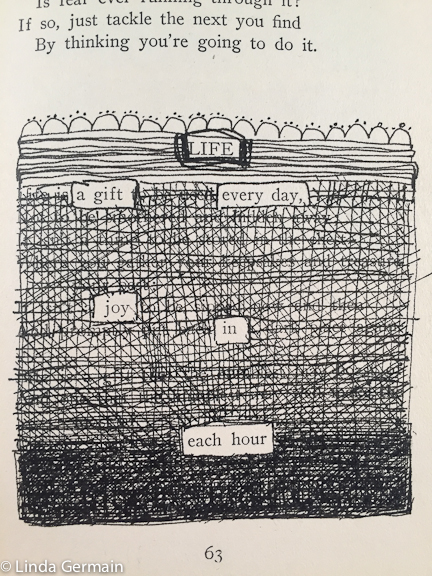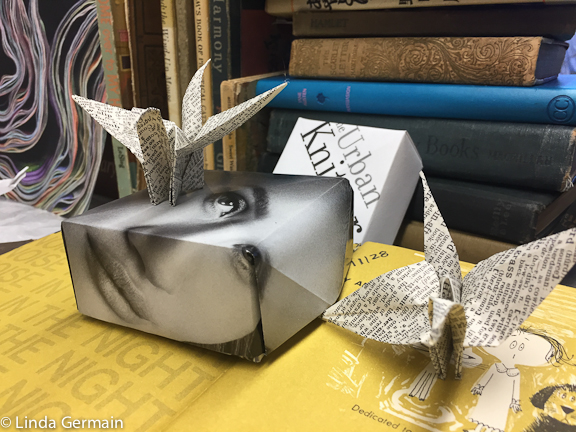Quick “table” for prints in progress
I always need more space. Recently I figured out that I could make temporary tables out of large pieces of foam core.
I have several big pieces of foam core that are easy to store up against the wall. And when I need a table to hold supplies, or prints in progress, I can lay the foam core across a stack of boxes, or! an ironing board or two, or a low shelf. Please use this idea if it helps you
These days my studio is a mess with monoprinted fabric. I am getting ready for the online printmaking class – Monoprinted Fabric that starts soon.
I am so pleased when I find myself learning new things even when I am doing processes that I have for years.
Here I used 2 pieces of foam core to make a folding table bigger, while I laid out monoprinted fabrics to sew together as a quilt.
Monoprinting with the gelatin plate on fabric is spontaneous and experimental. If that sounds fun to you then read the details on the workshop page and join us. Class starts soon.
Quick “table” for prints in progress Read More »
